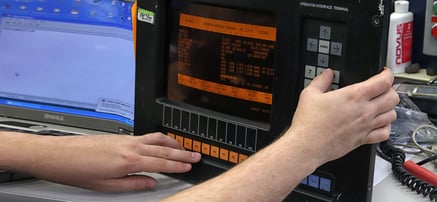What is an HMI?
HMI stands for Human-Machine Interface.
A Human-Machine Interface (HMI) is a user interface that connects a person to a machine. HMIs can technically be applied to any screen that allows a user to interact with a device. It is most commonly used in the context of an industrial process.
An HMI provides a visual overview of a system’s status and control of its overall operation. It’s screens can be programmed to display important information. Pictures, icons, sounds, and colors can all be used by HMIs to represent different operating conditions. Many HMIs deploy touch screen technology for user interaction with elements displayed on the screen.
Although HMI is the most common term for this technology, it is sometimes referred to as Man-Machine Interface (MMI), Operator Interface Terminal (OIT), Local Operator Interface (LOI), or Operator Terminal (OT).
In industrial settings, HMIs can be used to:
- Visually display data
- Track production time, trends, and tags
- Oversee KPIs
- Monitor machine inputs and outputs
 HMIs come in a variety of forms, from built-in screens on machines, to computer monitors, to tablets. Regardless of their format, their purpose is to provide insight into mechanical performance.
HMIs come in a variety of forms, from built-in screens on machines, to computer monitors, to tablets. Regardless of their format, their purpose is to provide insight into mechanical performance.
HMI technology is used by almost all industrial organizations, as well as a wide range of other companies, to interact with their machines and optimize their industrial processes.
Industries using HMIs include:
- Energy
- Food and beverage
- Manufacturing
- Oil and Gas
- Power Generation
- Recycling
- Transportation
- Water and Waste Water
Radwell International sell new, used and obsolete HMIs. Visit our Global Parts Search here.
Save up to 60% by repairing your HMI vs buying new. Find out more here.
For information about Radwell’s product and service offerings, visit:









